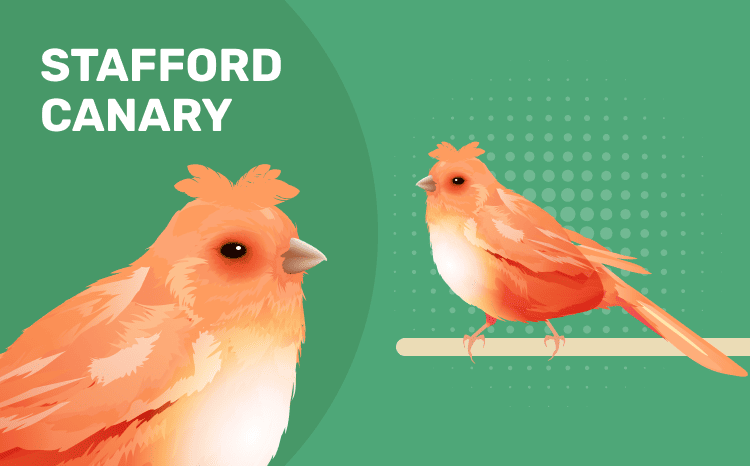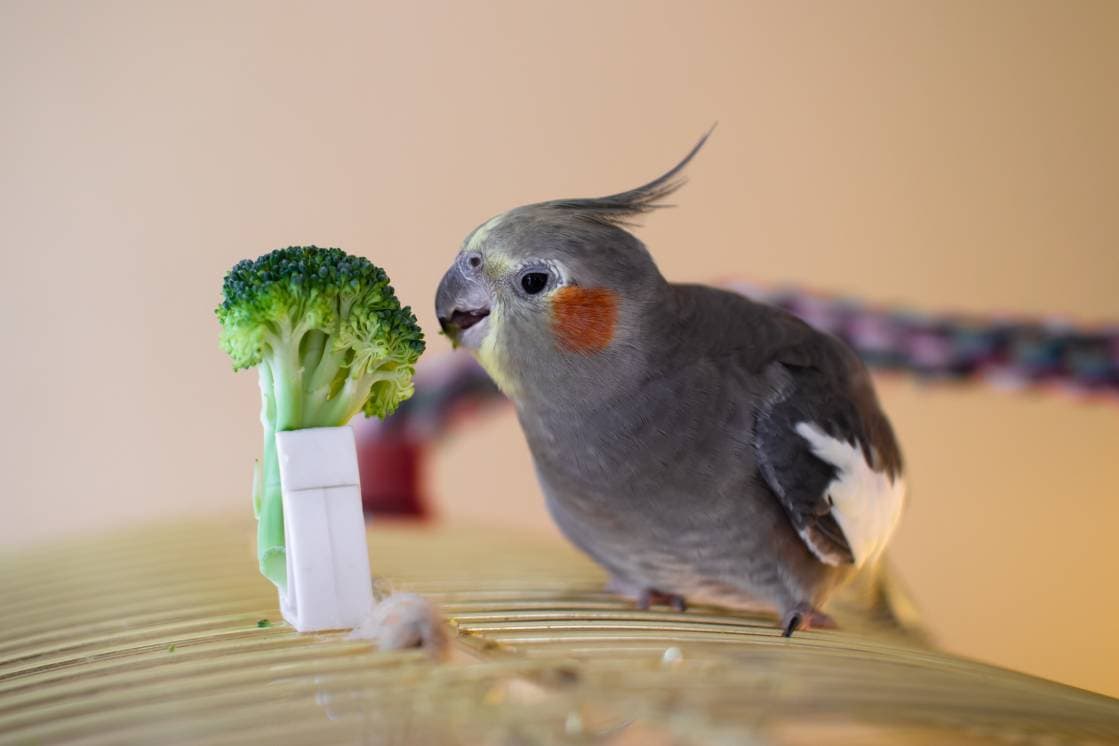
The Stafford canary is one of many types of common canaries that are kept as household pets. These compact little birds are about 5 inches long when fully grown, and most have colorful feathers. Many Stafford canaries are bred for conformation purposes. Originally created by breeding the red factor canary and Gloster canary together, this bird has established popularity among parrot lovers around the world.
Species Overview
| Common Names: | Stafford canary |
| Scientific Name: | Serinus canaria domesticus |
| Adult Size: | 5 inches long |
| Life Expectancy: | 10–15 years |
Origin and History
This is a relatively new variety of canary that was developed in Stafford, England. These birds were first introduced to the world in 1987 via the British National Exhibition bench.
It was not until 1990 that the Canary Council of Great Britain recognized the Stafford canary as an official breed1. They are now recognized as an established bird type in both the U.K. and the United States. Today, both crested and non-crested can be shown in official shows and competitions.
Temperament
The Stafford canary is a docile bird that can be timid around humans and does not enjoy being around loud noises and commotions. They prefer spending their time in an enclosed habitat where they feel safe and comfortable rather than hanging out in the open somewhere in the house.
That said, these good-natured birds do enjoy interacting with their owners. Their timidness requires a gentle hand and disposition. They should be housed in a space that doesn’t see much foot traffic or experience high levels of noise. If the habitat is spacious enough, these birds can feel comfortable living with other canaries and finches.
Speech & Vocalizations
Stafford canaries are not known for saying human words. The males, however, do communicate through singing2. Sometimes, the singing sounds like a series of tweets, while, other times, it sounds like an actual song. Males are the loudest and most vibrant singers, especially when they are looking for a mate. Putting them in a habitat by themselves can result in them singing more often.
Stafford Canary Colors and Markings
These beautiful little birds come in two different colors: red and rose. Some have light-colored markings on the tips of their wings, around their eyes, and on their chests. Others have dark markings that look like an overlay because the red and rose colors shine through. Their beaks are generally white or “peach” in color, and their eyes are typically small, dark, and round.
Caring for the Stafford Canary
The Stafford canary is relatively easy to care for, which makes them ideal for first-time pet owners. They require an enclosed habitat to live in, one that’s big enough for them to spread their wings and hop around a few times from one end to the other. Their habitat should be outfitted with bedding, a few branches to climb and perch on, and a swing.
Their cages should be cleaned out often, at least once a week, to minimize the risk of bacterial infection and pest infestation. While these birds do not mind spending time alone or with a fellow bird for company, they enjoy interacting with their human companions in a calm and gentle manner.
Common Health Problems
Like all canaries, the Stafford canary is a hardy animal that is not susceptible to many health problems if domesticated and properly cared for. Mite infestations are the biggest concern because if not caught in time, they could be deadly. Cleaning a bird’s habitat often is an effective way to avoid the risk of mite infestation.
Canaries that live outside can be exposed to canary pox, which is spread by mosquitoes. For this reason, we recommend always keeping your pet Stafford canary indoors or in an enclosed outdoor environment that mosquitoes cannot penetrate. Regular veterinarian checkups will help ensure a safe, happy, and healthy life for this type of bird.
Diet and Nutrition
These little birds should eat a complete commercial food as a main source of nutrients. Supplemental snacks should include small amounts of fruits, veggies, and eggs. They can also eat seeds, but their meals should include more than that. Seeds are fatty and do not contain all the vitamins, minerals, and other nutrients that are necessary for optimal health. If you’re in doubt, a veterinarian can recommend a dietary plan based on things like your bird’s age, health, and lifestyle.
Exercise
Stafford canaries are self-sufficient when it comes to exercise. They can get all the exercise that they need in the comfort of their habitat by bouncing from branch to branch, flapping their wings, and using their swing. They may also enjoy flying inside a safe and quiet bedroom where they cannot escape.
Where to Adopt or Buy a Stafford Canary
This type of canary is sold by breeders throughout the United States and elsewhere in the world. If you cannot find a breeder in your area to work with, though, you may have to travel out of town or even out of state to find a bird that you want to take home with you. Alternatively, you can check with local pet stores, as many sell a variety of canaries and finches. If they don’t specifically have Stafford canaries, they can likely source one for you or recommend sellers to inquire with.
Summary
Stafford canaries are beautiful little birds that are fun to watch and generally easy to take care of. Their vibrant feathers make them distinguishable from other types of canaries, and they don’t mind having habitat mates. These are docile and timid animals, but they are not against spending quality time with their companions.
Featured Image Credit: You are free to use this image but we do require you to link back to petkeen.com for credit









